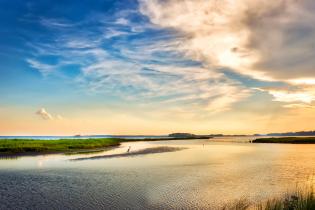Search
Landscape
Hawaiʻi
Located in the central north Pacific Ocean and spanning 1,523 miles, the Hawaiian Archipelago consists of eight major and 124 minor islands. Due to its remote geography, Hawai‘i’s unique natural environment evolved in isolation. Hawai‘i has the world’s highest percentage of endemic species—90 percent of terrestrial and more than 25 percent of marine species are found nowhere else on Earth. In fact, every native forest bird species can only be found in Hawai‘i. Many of these birds are stunning in terms of beauty and sound; more than 55 species of honeycreeper originated from a founding group of Eurasian rosefinches such as the now extinct Kaua‘i ‘akialoa, for which half of its length was accounted for by its long sickle-shaped bill.Image
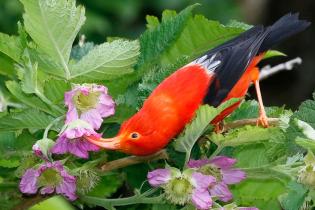
Landscape
Delaware River Watershed
The Delaware River is internationally recognized for its exceptional ecologically and historically significant sites.
Image
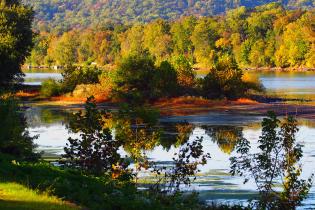
Landscape
Great Lakes
Containing more than 20 percent of the earth’s surface freshwater, the Great Lakes provide drinking water for more than 30 million people and habitat for a v
Image

Landscape
Lower Mississippi Alluvial Valley
The Lower Mississippi Alluvial Valley is the nation’s largest floodplain, covering more than 24 million acres across portions Arkansas, Illinois, Kentucky, L
Image

Landscape
Southwest Rivers
In the southwestern United States, streams and their riparian habitats have a disproportionate impact on wildlife, with 70 percent of threatened and endanger
Image
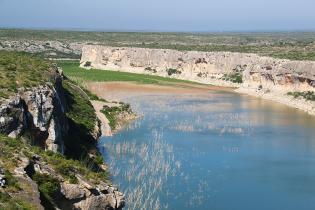
Landscape
Longleaf Forests and Rivers
The southeastern United States contains some of the most biologically diverse and economically important forest and freshwater systems in the world.
Image
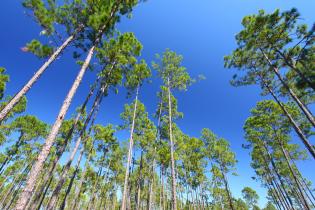
Landscape
Northern Great Plains
Stretching from the foothills of the Rockies into the badlands of the Dakotas and Nebraska, the Northern Great Plains cover over 180 million acres. The landscape is characterized by expansive grasslands supporting a unique assemblage of wildlife adapted to require little or no disturbance to sustain their populations.Image
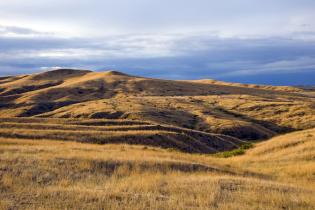
Landscape
Rocky Mountain Rangelands
The Rocky Mountain Rangelands encompasses the Intermountain West, including Colorado, Idaho, Montana, Nevada, Utah and Wyoming. The region supports a unique assemblage of wildlife adapted to the harsh climate that often require large, open spaces to sustain their populations. Irrigated agricultural lands provide habitat for suites of waterfowl, waterbirds and shorebirds during their migration and breeding season. The relative arid nature of the region has also led to endemic fish found only in small river systems.Image
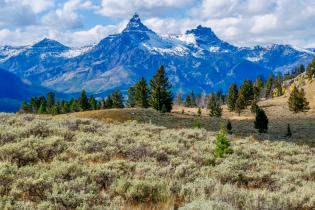
Landscape
Central Appalachia
Formed 480 million years ago, the Appalachians are the oldest mountain range in North America. Central Appalachia boasts some of the world’s oldest river systems and most biologically diverse temperate deciduous forests. The region’s forests, streams, rivers, wetlands and floodplains host a remarkable variety of flora and fauna with long evolutionary histories. For centuries local economies have relied on the region’s rich and abundant natural resources — its expansive forests for logging, its fertile valleys for farming, and its abundant sources of energy.Image
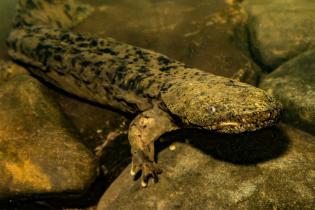
Landscape
Chesapeake Bay Watershed
Recognized as a “national treasure” for its historical, cultural, economic and ecological significance, the Chesapeake is the largest estuary in North America and one of the most productive in the world. Its watershed stretches across more than 64,000 square miles in the Mid-Atlantic, spanning from Norfolk, Virginia to Cooperstown, New York and from the sandy coastal plains of Delmarva Peninsula in Delaware and Maryland to the headwaters of the Potomac River in West Virginia’s Appalachian Mountains.Image
